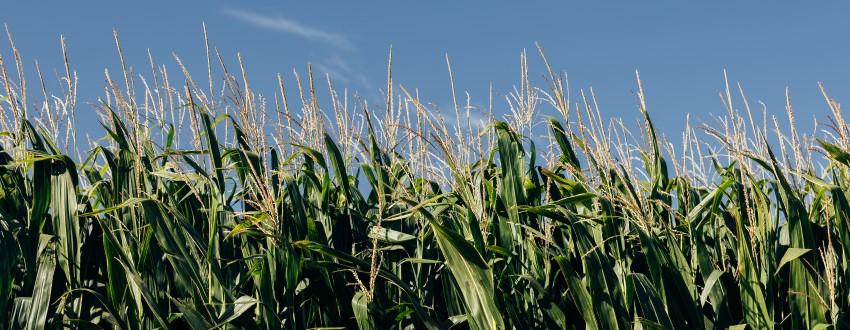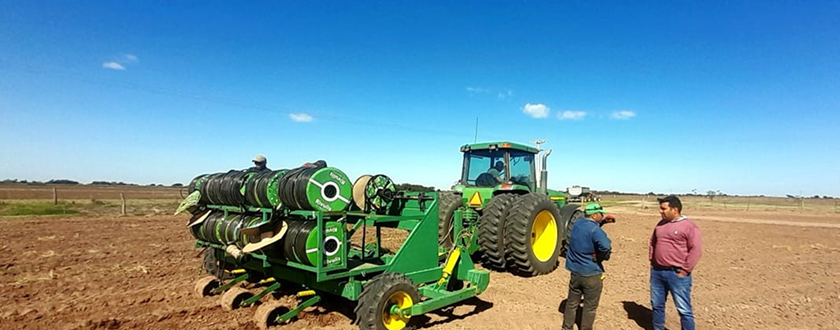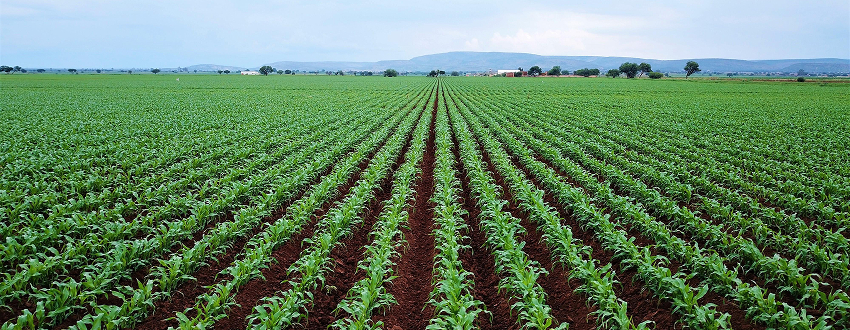Argentina stands as a beacon of innovation in Subsurface Drip Irrigation (SDI) for row crops. This success stems from favorable climatic conditions, advanced agricultural practices, and a willingness to adopt new technologies. The foundation of Argentina’s agricultural strength lies in blending traditional wisdom with fresh ideas.
With annual rainfall ranging from 600 to 900 mm, farmers can design irrigation systems that provide a precise 2.4 to 3 mm of water daily, significantly less than the typical requirement of 6 to 9 mm. This capability enables the irrigation of up to four times more land using the same water supply.
The high-quality soils in these regions retain moisture effectively, enhancing the overall performance of the irrigation systems. By minimizing soil disruption through practices like minimum or no-till farming – where farmers seed into the previous year’s crop residues – these farmers maintain healthy soil structures. The SDI systems work together with the soil, supplying moisture like a reservoir. This process positively impacts soil health, promoting deeper root growth and robust crop development.
Enhanced Crop Yields and Profitability:
The benefits of SDI also yield significant economic advantages. In winter, when traditional irrigation may struggle, SDI facilitates profitable wheat production. Farmers risk losing topsoil and crop viability during dry spells, often resorting to cover crops that generate little to no profit. By utilizing land that would otherwise lie fallow in winter, farmers can, over a two-year cycle, achieve up to five harvests (from two), thereby doubling their potential profits compared to traditional methods and establishing stability in the years following implementation.
For instance, in areas lacking SDI, average corn yields hover around 8,000 kg per hectare relying solely on flood irrigation or inconsistent rainfall. However, with SDI implementation, yields can soar to an impressive 18,000 kg per hectare over two seasons. In the case of wheat, it shifted from being a cover crop at a loss to harvesting 10,000 kg per hectare. This illustrates why many Argentinian farmers are transitioning to SDI: it enhances yield and supports economic sustainability in the face of climate change.
Terrain and System Design Advantages:
The geographical landscape of successful SDI row crop growing regions in Argentina facilitates the design of SDI systems with extended run lengths of up to 700 meters. This characteristic minimizes unnecessary field excavations and lowers maintenance complexity, making SDI a more attractive option than traditional pivot systems. Pivots, while effective, often miss approximately 22% of the field surface area, whereas SDI ensures that 100% of the area receives water.
This efficiency, along with reduced manual labor and streamlined field access, allows farmers to concentrate more on crop management rather than mechanical logistical challenges. Additionally, the SDI system’s design incorporates strategic water management techniques that are comparable to, or even surpassing, those used in pivot irrigation. Farmers can adjust their irrigation strategies, applying water according to the specific needs of different crop types without being limited by mechanized watering systems. This flexibility is particularly advantageous for managing water allocation across diverse crop rotations.
Environmental and Economic Benefits:
By minimizing surface water evaporation, SDI systems conserve water and reduce the need for herbicides by limiting weed growth. This approach cuts costs and fosters healthier ecosystems. Efficient application of fertilizers and chemicals—up to 95% effectiveness—reduces overall chemical usage, resulting in both economic and environmental benefits.
By capitalizing on natural advantages and embracing cutting-edge technologies, farmers are revolutionizing their practices to achieve unprecedented productivity and sustainability. Combining time-tested principles with modern strategies cultivates an innovative environment. As farmers worldwide confront challenges related to climate change and resource scarcity, Argentina’s experience with SDI provides valuable insights.





